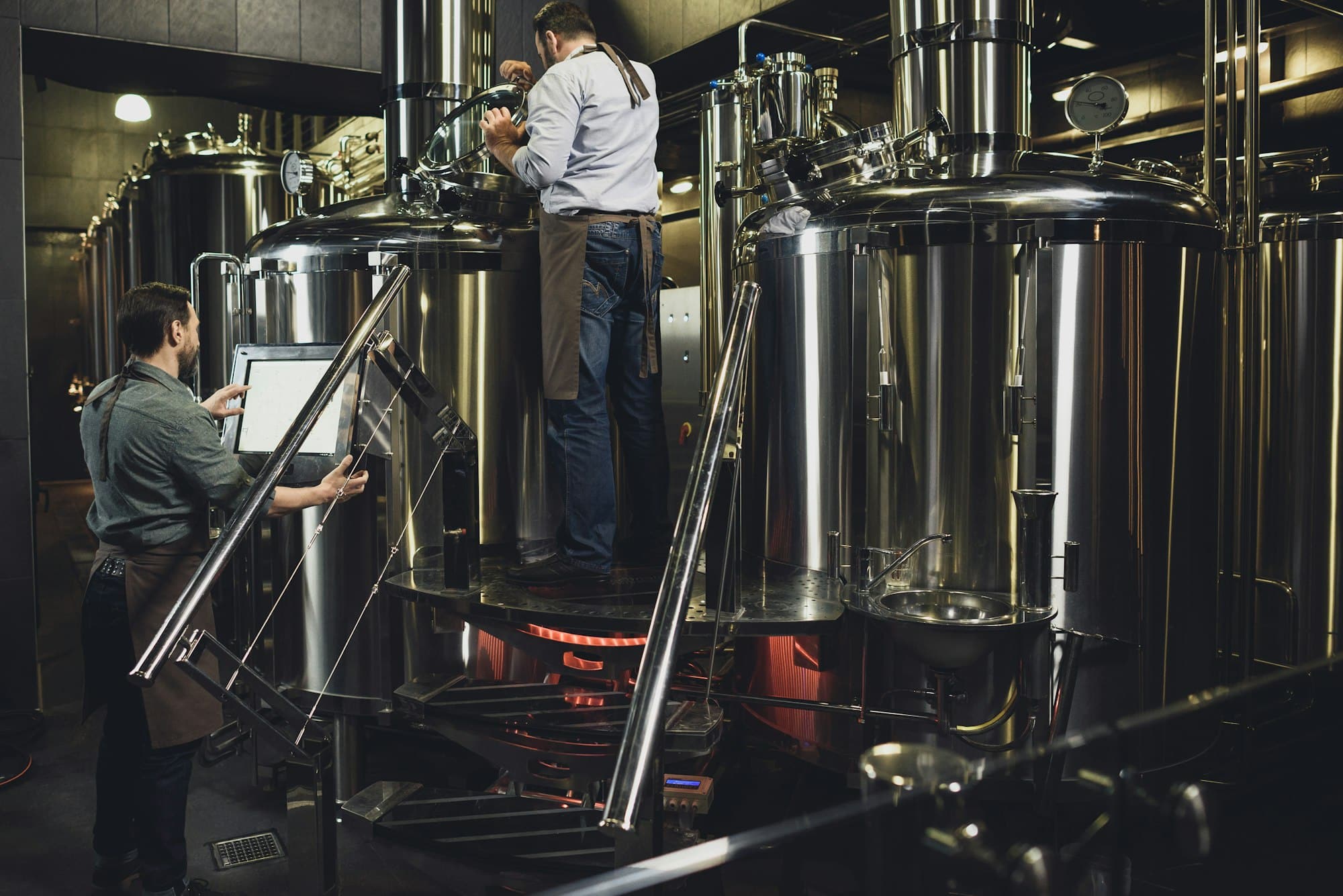Transforming your kitchen into a home brewing haven is easier than ever with innovative techniques designed for today's modern space. With the right approach, you can seamlessly blend functionality and aesthetics, creating an inviting atmosphere for brewing enthusiasts and guests alike. Explore practical ideas that maximize space, enhance workflow, and elevate your brewing experience without compromising your kitchen's style. Whether you're a seasoned brewer or a curious beginner, these strategies will inspire you to craft your perfect setup.
Advanced Integration Techniques for Home Brewing Systems
Incorporating a home brewing setup into your kitchen can be both a science and an art. The key is to blend aesthetics with functionality, ensuring that your brewing system complements your kitchen's design while meeting your brewing needs. Advanced techniques in kitchen integration often involve custom cabinetry and innovative storage solutions. These methods not only enhance the visual appeal but also improve the efficiency of your brewing process.
Also read : Top UK Blenders for Making Delicious Nut Butters: A Comprehensive Guide
When planning your home brewing setup, consider the importance of seamless integration. This involves selecting equipment that fits harmoniously with your kitchen's existing style. For instance, opting for stainless steel finishes can provide a modern look, while wood accents might suit a more rustic kitchen.
Case studies of successful integrations highlight the benefits of thoughtful design. One example is a home brewer who installed a compact brewing station within a kitchen island, allowing for easy access and optimal use of space. Another case involved a custom-built brewing cabinet that concealed equipment when not in use, maintaining a clean and uncluttered kitchen environment.
This might interest you : Top UK Blenders for Making Delicious Nut Butters: A Comprehensive Guide
By focusing on advanced techniques, you can create a home brewing setup that not only performs well but also enhances your kitchen's overall aesthetic and functionality.
Essential Tools and Equipment for Home Brewing
Embarking on your home brewing journey requires the right home brewing tools and brewing equipment. Ensuring you have all the essential supplies can make the process smoother and more enjoyable.
Overview of Essential Home Brewing Tools
To start, a few core tools are indispensable. A fermentation vessel is crucial, serving as the primary container where your brew will develop. Additionally, a hydrometer helps measure the specific gravity of your brew, indicating its alcohol content. A brew kettle is another must-have, where the initial boiling and mixing occur.
Recommended Brewing Equipment for Modern Kitchens
Integrating brewing equipment into modern kitchens involves selecting items that blend with the existing décor and functionality. Consider a stainless steel brew kettle for a sleek look or a compact fermentation chamber that fits seamlessly into your space. These choices ensure your equipment not only performs but also complements your kitchen's style.
Space-Saving Tools for Compact Setups
For those with limited space, opting for space-saving tools is key. A collapsible funnel can be stored easily, while a multi-purpose brewing spoon reduces the need for multiple utensils. These tools help maintain an uncluttered kitchen without sacrificing brewing efficiency.
Design Ideas for Modern Home Brewing Spaces
Creating a modern brewing space requires thoughtful integration of kitchen design and home brewing aesthetics. To achieve this, consider innovative design concepts that optimise both functionality and style.
Innovative Design Concepts for Brewing Areas
Modern brewing spaces benefit from sleek, minimalist designs that incorporate the latest in kitchen technology. Consider using built-in brewing stations that blend seamlessly with your kitchen's existing layout. This not only saves space but also creates a unified look.
Utilizing Cabinetry and Counter Space Effectively
Effective use of cabinetry and counter space is crucial. Custom cabinets can be designed to hide brewing equipment when not in use, maintaining a clean, uncluttered appearance. Pull-out shelves and hidden compartments are excellent for storing smaller brewing tools, ensuring everything is within reach yet out of sight.
Incorporating Visual Elements to Enhance the Brewing Experience
To enhance the brewing experience, incorporate visual elements such as ambient lighting and decorative backsplash tiles. These can highlight your brewing area and make it a focal point in your kitchen. Additionally, using materials like glass or metal can add a modern touch, complementing the overall aesthetic of your home brewing space.
By focusing on these design ideas, you can create a modern brewing space that is both functional and visually appealing.
DIY Modifications for a Custom Brewing Experience
Crafting a DIY brewing setup can be an exciting venture for home brewers looking to personalise their experience. By implementing custom modifications, you can tailor your equipment to better suit your brewing style and needs.
Step-by-step Guide to DIY Brewing Modifications
Embarking on a home brewing project begins with understanding your equipment. Start by identifying areas that need improvement or personalisation. For instance, adding a temperature control system to your fermentation vessel can enhance the consistency of your brews. Begin by gathering materials such as a temperature probe and a digital thermostat. Follow instructions carefully to integrate these components with your existing setup.
Creative Solutions for Common Brewing Challenges
Brewers often face challenges like maintaining optimal temperatures or managing space. Creative solutions include using a repurposed refrigerator as a fermentation chamber. This not only controls temperature but also maximises space. Another idea is to build a custom rack for your bottles, ensuring they are stored securely and conveniently.
Safety Considerations for DIY Projects
Safety is paramount in any DIY brewing modification. Ensure all electrical components are properly insulated to prevent hazards. Always use food-grade materials to avoid contamination. Additionally, maintain a clean and organised workspace to minimise accidents. By adhering to these precautions, you can enjoy a safe and rewarding brewing experience.
Maintenance and Safety Considerations for Brewing Systems
Proper brewing system maintenance is essential to ensure both the longevity and safety of your home brewing equipment. Regular care not only enhances performance but also prevents potential hazards.
Best Practices for Maintaining Brewing Equipment
To keep your brewing system in top condition, frequent cleaning is crucial. After each brewing session, thoroughly clean all components, including the brew kettle and fermentation vessel, to prevent residue build-up. Additionally, periodic checks for wear and tear can help identify parts that may need replacing, ensuring your system operates smoothly.
Safety Tips for Operating Home Brewing Systems
When using home brewing systems, safety should always be a priority. Ensure all electrical connections are secure and insulated to prevent electrical shocks. It's also important to keep your brewing area well-ventilated, especially during the boiling process, to avoid the accumulation of potentially harmful fumes.
Importance of Regular Inspections and Cleanings
Regular inspections play a vital role in maintaining a safe brewing environment. Look for any signs of leaks or corrosion, particularly in metal components, which can affect both safety and brew quality. Consistent cleaning routines not only maintain hygiene but also prevent contamination, ensuring your brews are always of the highest quality.
By adhering to these practices, you can enjoy a safe and efficient brewing experience.






